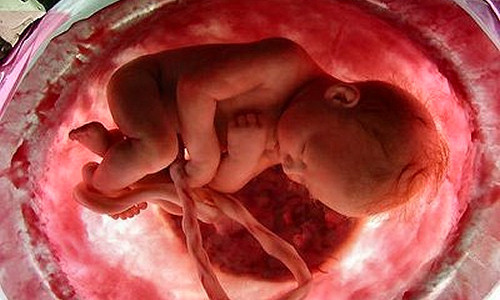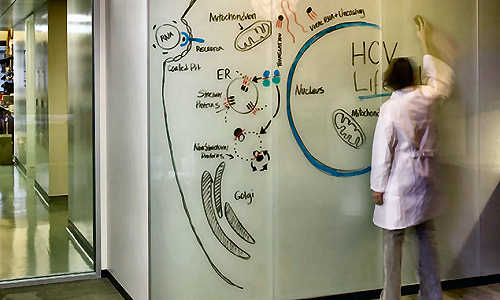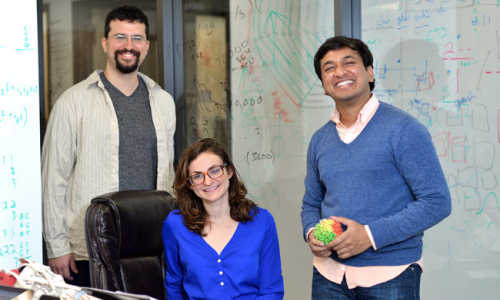Scientists in Hong Kong and the United States have mapped hundreds of thousands of DNA code variations spread across the genome of an unborn child in order to determine whether or not it would inherit a rare blood disorder.
The same approach could indicate, months before an infant is born, whether he or she has inherited cystic fibrosis, sickle-cell anaemia and other diseases. It could also determine a child’s complete genome sequence before birth.
“We’re about a factor of 100 away from commercial capability, but that will change,” says Charles Cantor, one of the co-authors of the study and chief scientific advisor at the genetic testing firm Sequenom, based in San Diego, California. The work is published online today in Science Translational Medicine1.
Building on the discovery that fragments of fetal DNA are present in a mother’s plasma, the company and other scientists are working to develop prenatal DNA tests as an alternative to amniocentesis and other invasive ways of collecting DNA from a developing fetus that raise the risk of miscarriage.
Gene hunt
The fetal DNA in a mother’s blood can already reveal an infant’s sex and other traits inherited from the father. But picking out a fetus’s entire genome from its mother’s is much tougher, says Dennis Lo, a chemical pathologist at the Chinese University of Hong Kong, who led the study. If a mother has two different versions, or alleles, of a gene, conventional genetic testing can’t work out which allele she passed on to her child, because her blood contains both.
Lo’s team confronted this problem by studying a couple who each carry different types of mutation in a gene involved in making haemoglobin. The woman’s unborn child inherits one allele from its mother and one from its father, which gives it a 25% chance of getting two healthy alleles; a 50% chance of one faulty allele and one healthy; and a 25% chance of getting two mutated alleles that together would cause it to develop beta-thalassaemia, a potentially fatal blood disorder caused by low oxygen uptake.
Their doctors collected DNA from the fetus 12 weeks into the pregnancy, using an invasive method. At the same time, Lo’s team drew blood from both mother and father to see whether they could come up with the same answer.
His team then sequenced tens of billions of DNA base pairs found in the mother’s blood and compared them to the mother’s and the father’s genomes at about 900,000 points.
It was easy to see that the father’s mutation appeared in the mother’s blood, indicating that the fetus had inherited its father’s faulty allele. But to work out whether the mother’s mutation had also made it into the fetus’s DNA, Lo’s team developed a way to count how many times each of the mother’s healthy and mutated alleles appeared in the blood sample.
If they were present in equal proportions, it would mean that the child had indeed inherited the disease mutation from its mother, giving it a double dose of faulty genes that would lead to beta-thalassemia. But Lo’s team found more of the healthy allele, suggesting that the fetus had inherited the correct maternal copy of the gene and would not develop beta-thalassaemia. DNA collected directly from the fetus confirmed those conclusions.
A new generation?
Lo’s team ended up sequencing 94% of the fetal DNA. But because the fetus’s sequences were inferred from their parents’ gene scans, whole-genome sequences of the parents (rather than a comparison with 900,000 points) are needed to get a complete fetal genome, Lo says.
“I do believe it’s possible to sequence most of the fetal genome from maternal blood,” agrees Steve Quake, a bioengineer at Stanford University in California. A graduate student in his lab, Christina Fan, came up with a similar approach that could discern a fetus’s DNA from its mother’s. They have posted the procedure to Nature Precedings, a preprint site.
Sinuhe Hahn, a molecular biologist at Basel University, Switzerland, says the study heralds “an entire new generation of prenatal diagnostic testing”. But he worries that fetal genomes will be feasible long before doctors and parents know what to do with them. “The amount of information we’re getting can be more than the clinician wants,” says Hahn.
Until medical science catches up with sequencing technology, the approach “will have to be focused on things we understand”, says Cantor.
Diana W. Bianchi, a reproductive geneticist at Tufts University School of Medicine in Boston, Massachusetts, agrees that fetal genomes could inform treatment in the future, but she questions the need to replace conventional genetic testing with whole-genome sequencing to diagnose genetic diseases such as beta-thalassaemia and cystic fibrosis. “I talk to obstetricians all the time and they want it straightforward,” she says. “This is not going to be straightforward.”
Story Source: The above story is reprinted from materials provided by Nature News. The original article was written by Ewen Callaway
References: 1. Lo, Y. D. M., et al. Sci. Transl. Med. 2, 61ra91 (2010).





